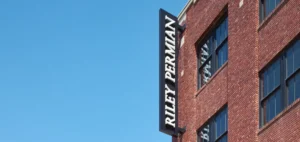Russia launched a combined attack of 35 missiles and 60 drones against Ukrainian energy infrastructure, in what Naftogaz described as the largest offensive against the gas sector since the war began in 2022. The Ukrainian Air Force reported that 18 missiles and 78 drones reached their targets, while the others were intercepted. The strikes mainly targeted gas extraction facilities.
Critical facilities hit in two strategic regions
The regions of Kharkiv in the northeast and Poltava in the centre of the country were heavily affected. State-owned company Naftogaz confirmed that several sites had sustained significant damage, with some classified as critical. Naftogaz Chief Executive Officer Sergiy Koretsky denounced a deliberate campaign against civilian infrastructure, stating that the goal was to compromise winter energy supply.
Private operator DTEK also reported substantial damage to its facilities, without providing details on the extent of the disruption. At this stage, no estimates have been released regarding the direct impact on national gas production or domestic distribution.
A recurring strategy ahead of winter
Ukrainian Prime Minister Yuliia Svyrydenko accused Moscow of attempting to disrupt the heating season. According to government data, strikes during the previous winter had already halved national gas production. The first targeted strikes against the Ukrainian gas network were observed last winter, following two years of widespread bombardment of electrical infrastructure.
The Russian Ministry of Defence acknowledged carrying out “massive strikes with high-precision weapons” on infrastructure it claimed supported Ukraine’s military-industrial capabilities. Russian authorities did not specify the exact nature of the targets nor release an assessment of the damage inflicted.
Ukrainian retaliation on Russian oil facilities
In response to these strikes, Ukraine has continued attacks on oil infrastructure within Russian territory. A source within the Security Service of Ukraine (SBU) claimed a Ukrainian drone had struck a refinery in the Orenburg region, approximately 1,400 kilometres from the border. Footage shared on social media shows an impact followed by a column of smoke, though the authenticity of the videos has not been confirmed.
The regional Russian governor acknowledged a drone strike on an industrial facility without providing further information. No official data has been released on the potential economic or operational impact on the affected refinery.
International judicial pressure on Russian military leadership
In 2024, the International Criminal Court issued arrest warrants for the former Russian Minister of Defence and the Chief of General Staff for their involvement in the strikes on Ukraine’s energy infrastructure. These attacks are considered war crimes under international humanitarian law. The systematic strikes on gas production sites reflect a shift in Russian military strategy, now targeting primary energy resources ahead of winter.






















